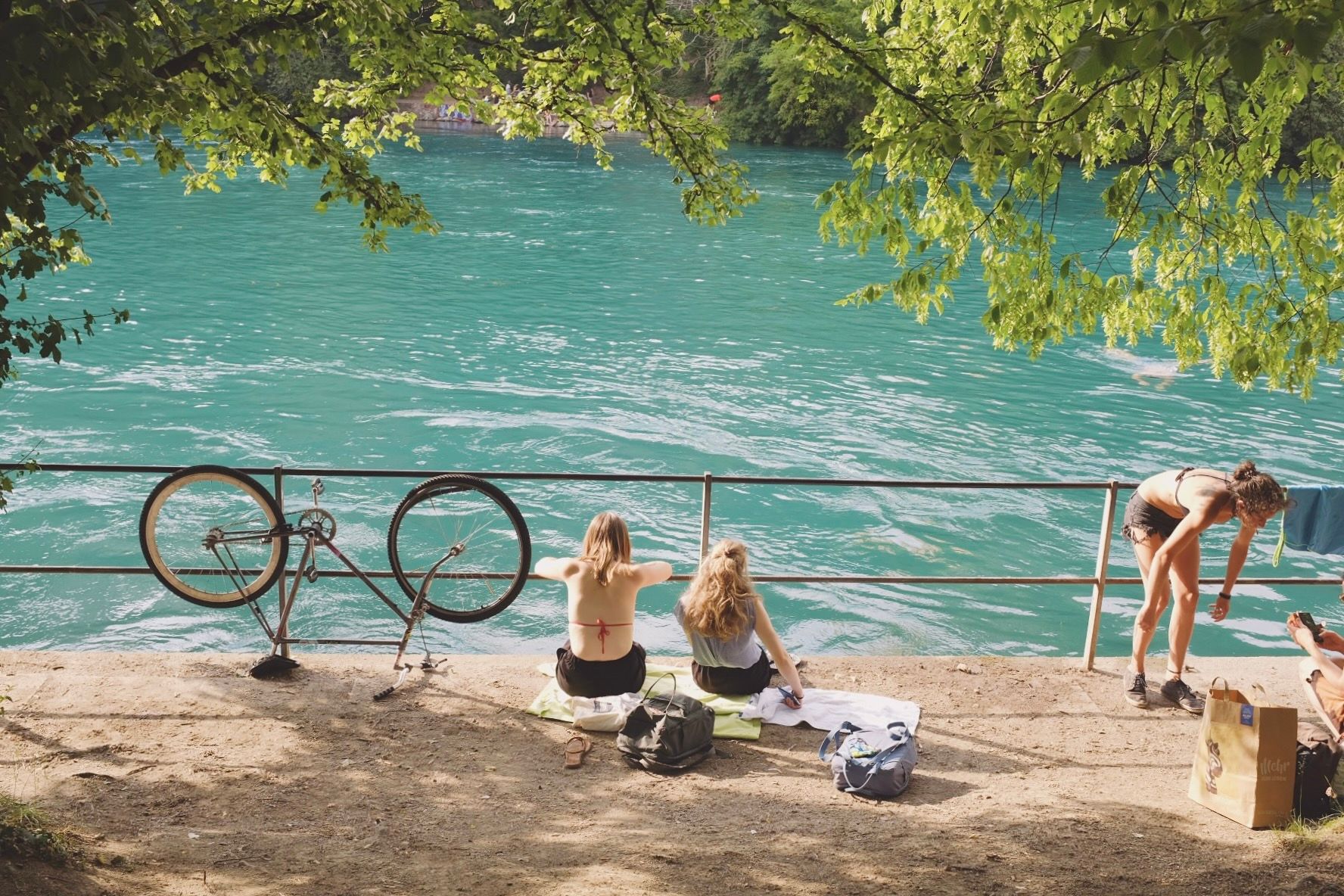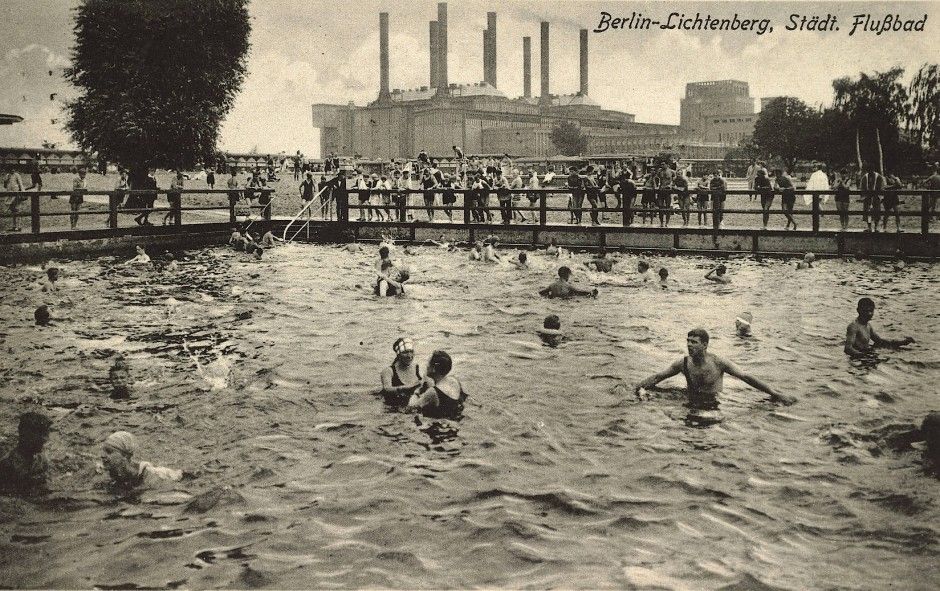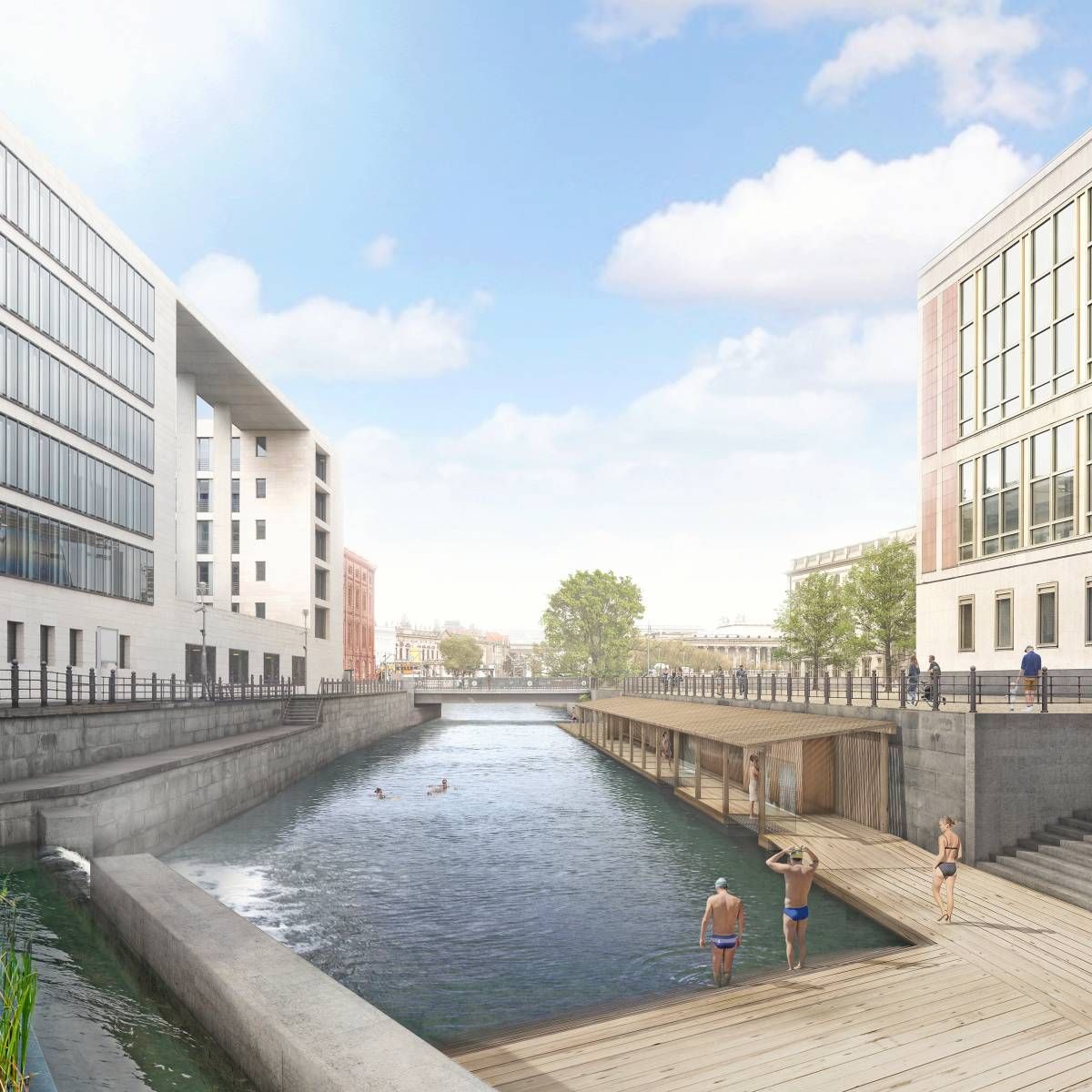Swim
June 30, 2021 Berlin Geneva Swimming Public Space Switzerland Paris Olympic Games

Geneva lies by the Southern tip of the eponymous Lake Geneva, an expansive, light blue body of water surrounded by the mountains. The lake flows into the Rhône, which stretches all the way to France and eventually into the Mediterranean Sea. Of course you can’t see that far from Geneva’s city center, but there’s no doubting this is a powerful river when you see it flow past the bridge below your feet.
Last week, on a hot, cloudless day, we did what the locals do and jumped from the shoreline into the water. You immediately feel the current, and as you swim towards the center of the river, it begins to drag you downstream. We bopped around in the water like wine corks.
Swimming in the Rhône was easily my favorite thing during our trip to Switzerland: Floating in crystal clear water, you get a unique perspective on the city, which so often seems inaccessible with its fenced properties and sky-high prices. Every couple hundred meters between the shore, there were ladders to climb out of the river, walk back past the sunbathing locals, and do it all over again.
In my version of the internet, I’ve been witnessing a lot of discussions about the use of public space by private property (be it parked cars or houses), but we seldom talk about waterways in the city and how those are inaccessible for the greater public—either because they’re used for shipping, industry, or simply because they’re too polluted to swim in. When I see a body of water in the city, I don’t even consider it for any sort of sports, simply because I’ve grown up with the idea that it’s decorative at best.
 The Lichtenberg river bath
The Lichtenberg river bath
Of course it hasn’t always been that way, and it doesn’t have to keep being that way: Back in the 1920s, Berlin was running a number of public swimming pools right on the Spree river—the one in Lichtenberg sat right next to a local heating plant which warmed the water during the colder months. It wasn’t until 1925 that swimming was officially banned because of declining water quality. Today, swimming still isn’t allowed—the reason being that the river is considered a federal water way and therefore not up to the city to regulate. To make matters worse, during heavy rainfall the city’s sewage system tends to overflow and empty into the river.
 The water was conveniently warmed by runoff from the adjourning heat plant.
The water was conveniently warmed by runoff from the adjourning heat plant.
To my surprise, there are actually a number of proposals to bring back swimming in the city, notably a project that would open up a side arm of the Spree to swimming right in the city center, relying on a biological filtration system of plants to be placed at the entrance of the canal.
„Flussbad Berlin” seeks to transform and reactivate the largely unused 1.8 kilometre stretch of the Spree Canal in Berlin-Mitte along with its adjacent urban areas. The project involves a park landscape, an extensive natural plant filter and an 840-metre natural bathing area. Flussbad Berlin has a number of different and multilayered objectives; however, its main focus is on revitalising the existing natural and urban resources in the area, cleaning the river in this section and establishing direct public access to the canal.
It’s controversial, mostly because of the associated costs and also because many people can’t picture half-naked swimmers in between the city’s historic facades. For me, it’s a reconsideration of public space that’s long overdue. After all, the publicly accessible river in Geneva already felt like it belonged to Berlin.
 A render of what the Flussbad could look like.
A render of what the Flussbad could look like.
Update, 12 July 2023: In May, the New York Times ran a story about how Parisian authorities have an ambitious plan to clean up the city’s Seine river in time for the Olympic Games in Summer 2024. The idea is not only to host swimming competitions in the river, but also to open it up to the public: “One legacy of the Games, the city’s mayor, Anne Hidalgo, has promised, will be giving locals access to some 20 swimming areas along the Seine and its upstream tributary, the Marne, by the summer of 2025.”